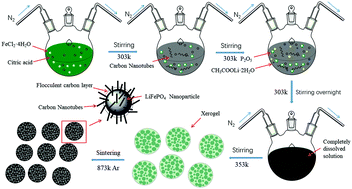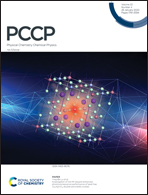Superior electrochemical performance of a novel LiFePO4/C/CNTs composite for aqueous rechargeable lithium-ion batteries
Abstract
Olivine LiFePO4 covered flocculent carbon layers wrapped with carbon nanotubes (CNTs) prepared by sol–gel method and calcination is used as the cathode material for aqueous rechargeable lithium-ion batteries (ARLBs). The phase structures and morphologies of the composite material are characterized by X-ray diffraction (XRD), selected area electron diffraction (SAED), and transmission electron microscopy (TEM). The mechanism and method through which CNTs and flocculent carbon improve the electrochemical performance are investigated in an aqueous lithium-ion battery by setting up a comparative experiment. The ARLB system is assembled using a LiFePO4/C/CNTs cathode and a zinc anode in 1 mol L−1 ZnSO4·7H2O and saturated LiNO3 aqueous solution (pH = 6), which can deliver a capacity of 158 mA h g−1 at a rate of 1C. Even at a rate of 50C, it still has a capacity of 110 mA h g−1 after 250 cycles with fantastic capacity retention (95.7%). The lithium-ion diffusion coefficient increases by an order of magnitude due to the addition of CNTs together with flocculent carbon. Four LEDs are successfully powered by the ARLBs for more than one minute to demonstrate the practical application. The excellent rate capabilities and thrilling discharge capacity at a high rate indicate that this cathode material possesses excellent electrochemical performance, and this ARLB system exhibits excellent potential as a power source for environmental applications.

- This article is part of the themed collection: 2020 PCCP HOT Articles


 Please wait while we load your content...
Please wait while we load your content...